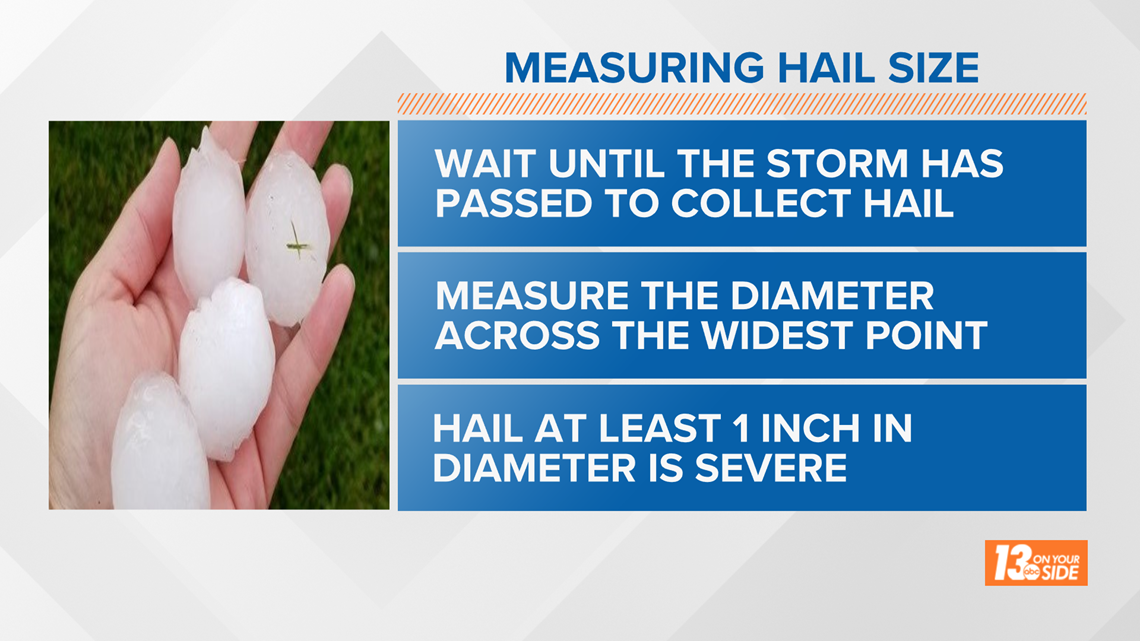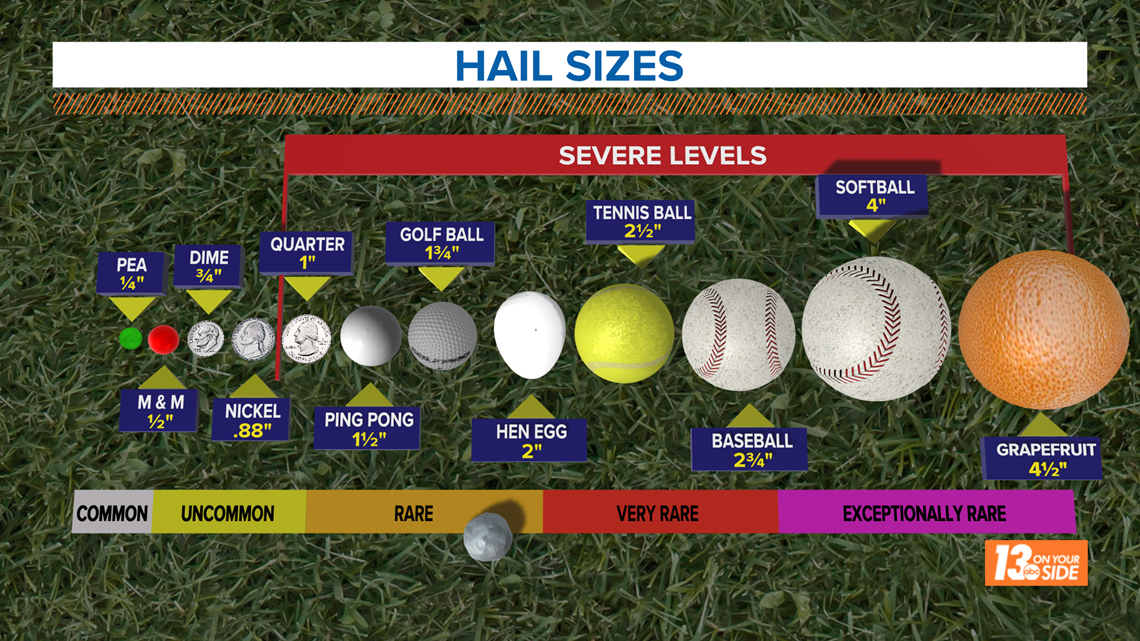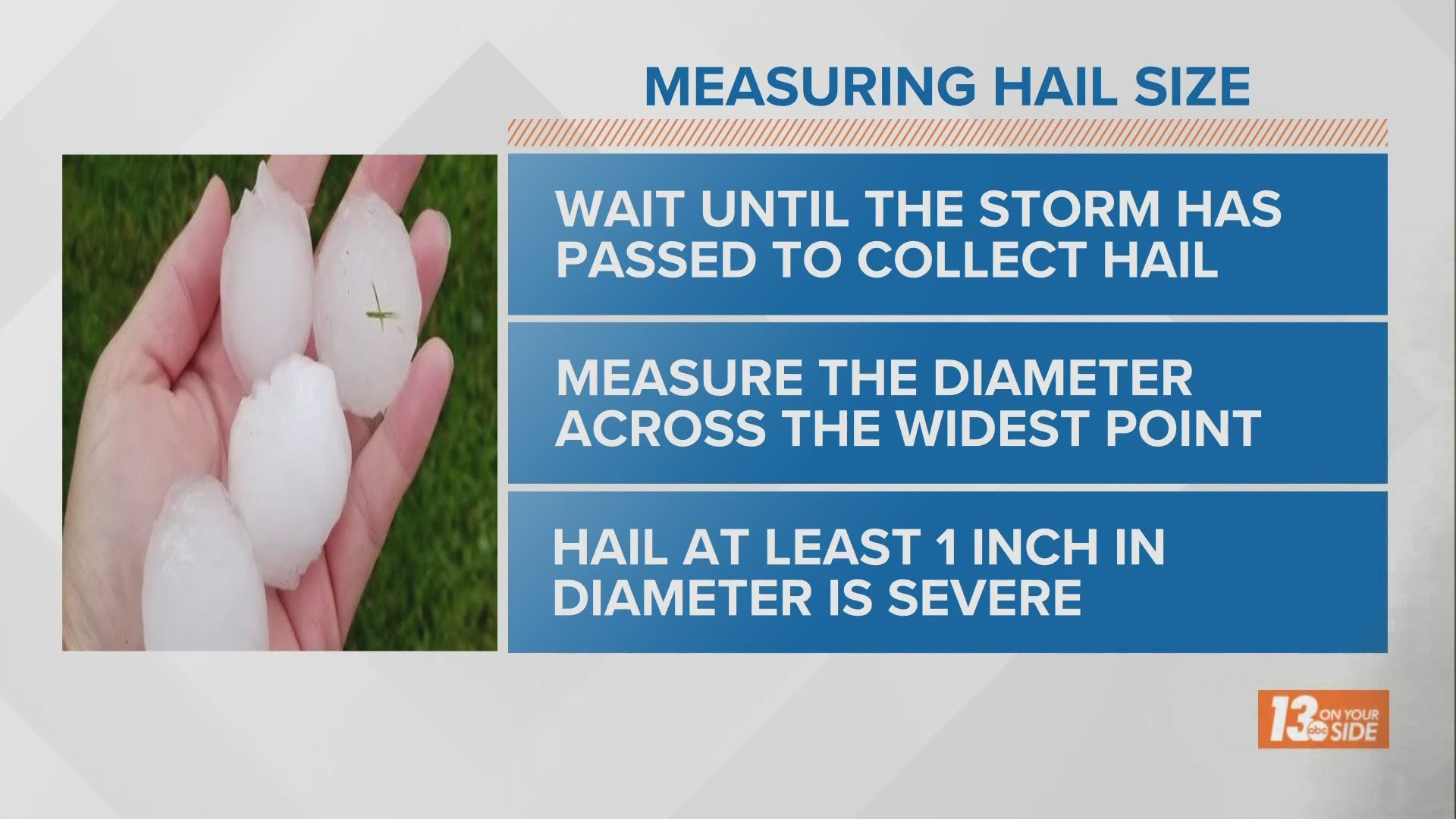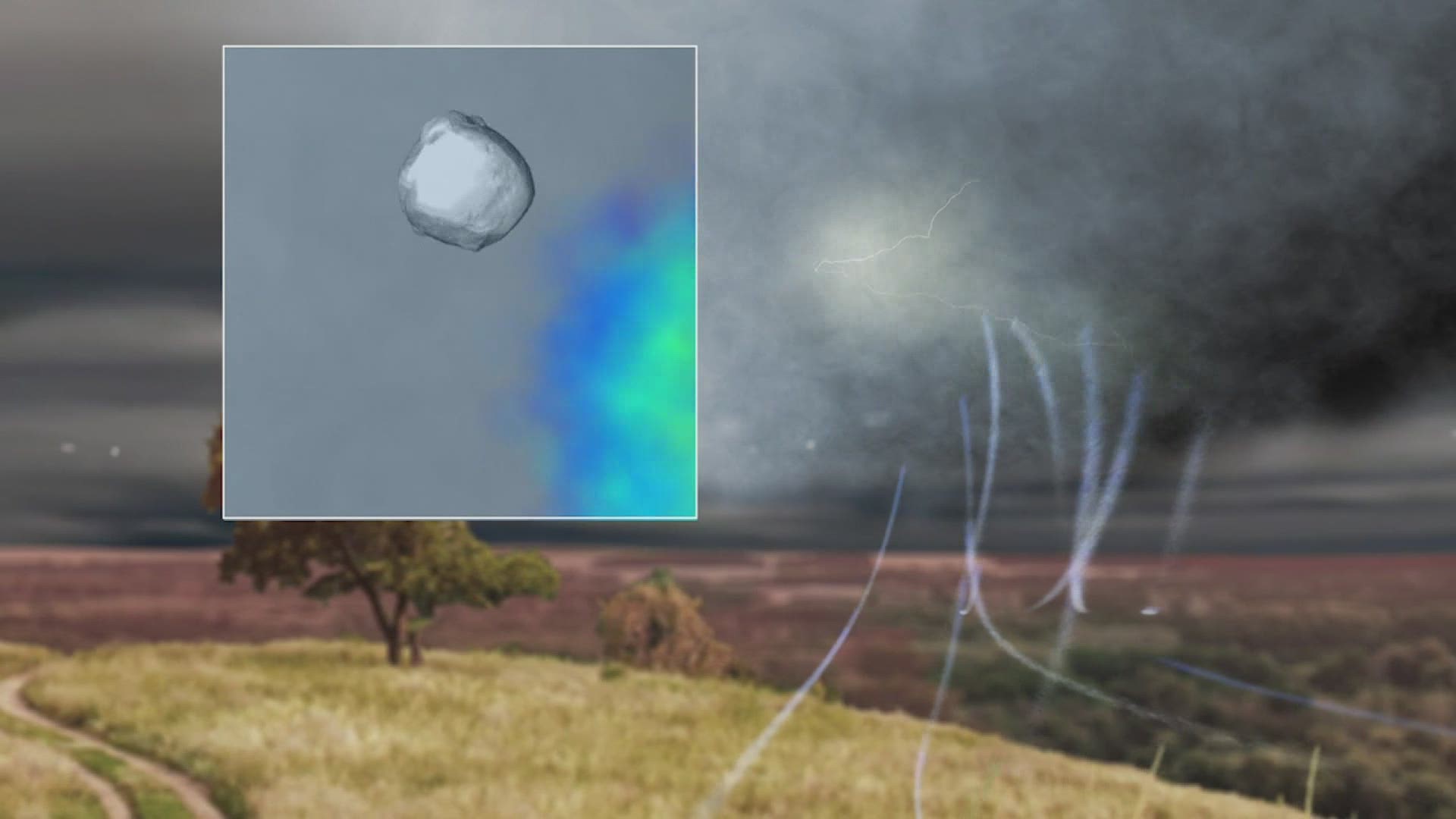GRAND RAPIDS, Mich. — Often times when we get severe weather in West Michigan we end up dealing with something that feels like it shouldn't be falling from thunderstorms usually fueled by warmer air. That's right, the cold lump of ice that leaves dents in our cars called hail!
So why does hail form, and how should we report it when it does?
Let's take a look!
How Hail Forms:
It all starts with a strong thunderstorm. The stronger the storm, the stronger a feature in the storm called an updraft becomes.
An updraft is a current of air flowing up from the surface to the top of the thunderstorm. This current, if strong enough, can overcome the gravity pulling down on a rain droplet and actually force it back upwards into the higher elevations of the storm cloud, where temperatures are often below freezing.
As the rain droplet starts to freeze, a small hailstone is formed. This hailstone will grow larger and larger as other rain droplets collect and freeze on the initial piece of hail. As it grows the hailstone will become heavier overtime.
This hailstone will stay in the cloud so long as the updraft winds are strong enough to keep it suspended. Stronger storms have stronger updrafts and thus produce larger hail.
The larger the hail the more dangerous and destructive it will be to life, property, and livestock.
Measuring Hail:
When it comes to dealing with hail, getting accurate reports about the size of the hail is very important for issuing severe weather warnings and informing the public about the strength and threat posed by a storm.
Hail size is a strong indicator of how strong a thunderstorm actually is. The bigger the hail, the stronger the storm that produced it.
So here's what you need to know to measure hail accurately!
First, make sure the storm has passed before going out to measure hail. Then, if you have a ruler or other measuring device, measure the diameter of the hailstone from the widest point. If it has a weird finger extending out from the center, use this for the diameter, as it is the widest point.
Hail 1 inch in diameter or greater is considered severe.


If you don't have a way to accurately measure the hail, use the following chart to estimate the size of the hail that has fallen near you. Never compare it to a marble, as marbles come in many sizes, and this does not represent an accurate comparison.


At the end of the day, reporting the size of the hail that has fallen to 13 On Your Side or The National Weather Service goes a long way in helping us communicate the risks associated with severe weather, and provides a ground truth to our coverage.
If you have a report during severe weather, you can always send it to Weather@13OnYourSide.com or post it to our 13OnYourSide Facebook Page.
Stay weather aware West Michigan!
-- Meteorologist Michael Behrens
Follow me on social media! Facebook Meteorologist Michael Behrens, Twitter @MikeBehrensWX, and Instagram @MikeBehrensWX.
Email me at: MBehrens@13OnYourSide.com
►Make it easy to keep up to date with more stories like this. Download the 13 ON YOUR SIDE app now.
Have a news tip? Email news@13onyourside.com, visit our Facebook page or Twitter. Subscribe to our YouTube channel.


